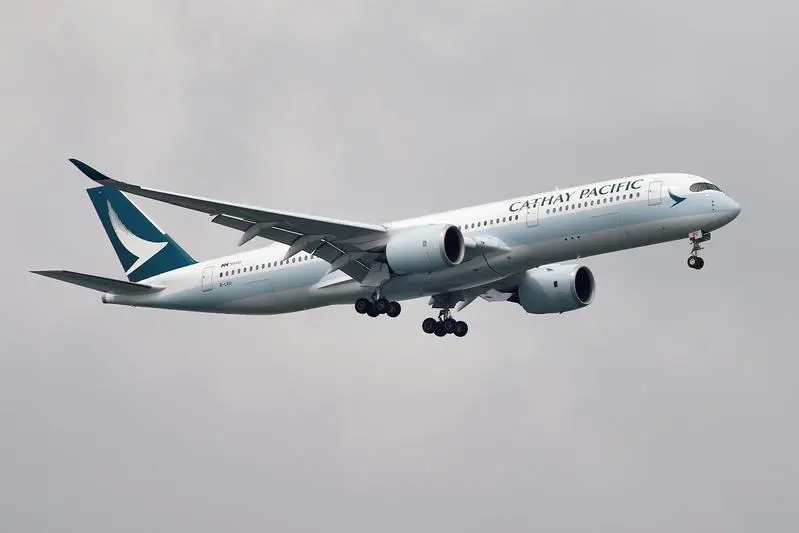PHOTO
With calls to reduce carbon footprints growing louder worldwide, public and private sector leaders are taking much-needed action on climate change. The aviation industry is no different as airline companies redouble their efforts to pave the way for sustainability and ensure future generations can enjoy the benefits of flying while minimising their environmental impact.
The aviation sector is a uniquely hard-to-abate sector with the critical yet challenging task of tackling climate change. Yet, Cathay Pacific Airways has taken significant steps by pledging to achieve net-zero carbon emissions by 2050. Using sustainable aviation fuels, investing in modern and fuel-efficient fleet such as the Airbus A350s and the Airbus A321neos, increasing focus on its carbon offset programme - Fly Greener and reducing aircraft as well as on-ground emissions are all necessary initiatives the airline has taken that could and should help to ensure the long-term sustainability of commercial aviation, says Vishnu Rajendran, Cathay Pacific’s Middle East Area Manager.
Speaking exclusively to Travel and Tourism News Middle East, he outlined the airline’s sustainability plans, as well as how it intends to be a more customer centric brand by providing customers, including persons with disabilities a safe and enjoyable travel experience while making the Hong Kong-based carrier a more passenger-friendly flying partner.
“Decarbonisation in the aviation sector is crucial because flying accounts for 3 percent of worldwide CO2 emissions, making it a significant polluter,” said Rajendran. “Our top priority is to reduce CO2 emissions and we’ve already made great stride in taking an active and collaborative approach in creating breakthrough innovations needed to eliminate these.”
“Cathay Pacific, early last year, took an imminent essential step towards sustainability when it announced the formation of the Aviation Climate Taskforce (ACT) alongside Boston Consulting Group (BCG) and other airline leaders,” he noted. The non-profit organisation was established recently to address the challenge of eliminating carbon emissions in aviation through collaboration and innovation.
According to Rajendran, Cathay Pacific has led the way in decarbonisation efforts throughout the years, becoming the first airline company in 2014 to invest in Fulcrum BioEnergy, which develops Sustainable Aviation Fuel (SAF). Cathay Pacific is also one of the first Asian airlines to set a timeline for attaining carbon neutrality.
“We plan to use SAF for 10 percent of our entire fuel usage by 2030,” Rajendran said, adding that “cross-sector partnerships will help us meet the goal of net-zero carbon emissions by 2050.”
Over the past few years, the company has made pioneering efforts in supporting SAF development. The 2014 deal saw the airline commit to purchasing 1.1 million tonnes of SAF over 10 years, which will cover around two percent of its pre-COVID-19 fuel requirements on an annual basis. The airline company expects to begin taking delivery of SAF produced by Fulcrum and using it on a wider basis for its flights departing the US from 2024 onward.
“Currently, sustainable aviation fuels are mixed directly with conventional jet fuel up to a 50/50 blend,” Rajendran said. He added that using SAF is critical to decarbonising our operations in the next decades. “Our pledge to use SAF for up to 10 percent of our total fuel use by 2030 is a clear indicator of our desire to meet our net-zero emissions target and be a leader in the battle against climate change.”
Cathay Pacific has also pledged to reduce its absolute ground emissions by 32 percent by 2030 through strengthening energy-saving measures and adopting renewable energy solutions. The Hong Kong based carrier has invested in technology that provides operational improvements such as e-Enabled Aircraft Programmes, Reducing Engine Taxi-In (RETI) and electronic Flight Folder that helps achieve operational efficiency while also reducing greenhouse gas emission. However, the ability to meet the sustainability target, according to Rajendran, does not lie only with airlines. “We are encouraging all stakeholders to decrease their carbon footprint, including policymakers, the energy sector, aircraft and engine manufacturers, and even our consumers.”
Talking further about Cathay Pacific’s benefits for their customers, Rajendran added that Cathay Pacific believes in moving beyond for its customers and providing them with a comfortable travel experience. The airline has been focusing on providing special assistance for people of determination and those with disability or mobility needs on flights.
“Our ground and cabin crews are trained to help passengers with disabilities,” he said. “While some of our services depend on certain safety requirements, passengers with disabilities or passengers requiring mobiltity support can receive assistance onboard our aircraft with moving to and from seats, preparing to eat, visiting the lavatory and using the inflight wheelchair to get around the aircraft.”
Copyright 2022 Al Hilal Publishing and Marketing Group Provided by SyndiGate Media Inc. (Syndigate.info).





















